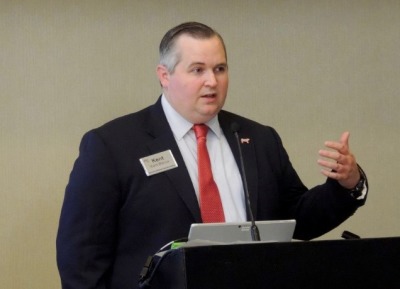U.S. beef exports to China are rising and the long-term forecast is optimistic for U.S. producers and shippers, but the deal that enables those lofty expectations hasn’t been completely finalized by the Chinese, according to government and industry sources.
China has not taken the final step to lift its zero-tolerance for growth hormones — essentially, the act of publishing a final rule — which some say is an inconsequential technicality, but others stress is a concern that’s keeping U.S. companies from expanding beef exports at a quicker pace. Most government and industry officials who spoke to Agri-Pulse asked not to be named because of the sensitivity of the subject, especially ahead of a high-level U.S.-China trade meeting expected to take place soon.
China was importing U.S. beef even before it agreed under the “phase one” trade pact to accept international residue levels for growth hormones, but that pre-deal beef is produced under the strictest standards that are also in place for U.S. shipments to the European Union. As a result of “phase one,” the supply of U.S. beef eligible for export to China should be far greater — virtually on par with Japan, South Korea and other major importing countries. The one major difference is that China still has not agreed to accept beef from cattle that were fed the growth promotant ractopamine.
But much of the U.S. beef now being sold to China is still coming from the restricted, non-hormone supply, sources tell Agri-Pulse. Some U.S. exporters are comfortable shipping beef from hormone-treated cattle, but many won’t be until China finalizes the process.
The concern, two trade sources said, is that technically, U.S. beef shipments could be rejected. As the U.S.-China relationship has worsened, that concern has only become more acute.
“You have to distrust them,” Secretary of State Mike Pompeo said about the Chinese in a Newsmax interview Monday. “You have to challenge everything that they say. You need to go verify it when they make a promise. And when they do that, when they make a commitment and they verify it, we’ll applaud them. But we’re no longer going to stand by and allow them to take actions that threaten us all.”
So far, however, the U.S.-China confrontations over the origin of COVID-19, the escalating Chinese crackdown on Hong Kong, and the alleged spying that resulted in shuttered consulates in both countries have not made a visible impact on the resumption of trade under the “phase one” pact.
“We’re fully aware that when you look at all the other issues involving the U.S. and China relationship, there’s so many other factors to take into consideration,” said Kent Bacus, director of international trade and market access for the National Cattlemen’s Beef Association. “As far as trade goes, we still think that China is going to be a great market for us. We see a lot of potential and opportunity there. Once we have this agreement fully implemented, we’ll be able to capitalize on it.”

Kent Bacus, NCBA
It’s unclear exactly how much of the U.S. beef going to China is still non-hormone treated product, but industry and government sources say it’s still the safest option and there is plenty available. That’s because EU demand is down.
The EU agreed about a year ago to guarantee that the U.S. would receive 80% of its tariff rate quota for NHTC beef imports. That translates into 18,500 metric tons annually, but the TRQ would expand over seven years to reach 35,000 metric tons.
The TRQ was filling up fast before the COVID-19 pandemic, but European demand collapsed once the virus hit and food service operations shuttered, one U.S. industry source said. Much of the U.S. beef that would have gone to Europe is now going to China.
“One reason exporters might still be relying on beef from non-hormone treated cattle … for China is that cattle enrolled in the NHTC program are also ractopamine-free,” said a spokesman for the U.S. Meat Export Federation. “Since China has not changed its ractopamine policy, the NHTC program still represents a reliable way of securing cattle that meet all of China's import requirements.”
Some in the U.S. beef industry say the fact that China hasn’t technically completed the process of no longer requiring NHTC beef is irrelevant, primarily because the USDA’s Food Safety and Inspection Service has listed the changes in Chinese policy in its own export library — the primary source exporters consult for requirements on international meat trade.
FSIS published the new “phase one” requirements for beef shipments to China on March 17. Since then Chinese importers have purchased 10,200 metric tons of U.S. beef, according to USDA data. As a point of comparison, South Korea — a longtime and well-established importer, purchased 94,400 metric tons of U.S. beef in the same time period.
Interested in more coverage and insights? Receive a free month of Agri-Pulse.
FSIS's listing of the new Chinese requirements makes the “phase one” agreement on growth hormone levels “official,” stressed one industry source, who emphasized: “That’s what we go by and as far as we’re concerned, it’s not a concern for us.”
And any other concern, another sourced stressed, should be tempered by the fact that China has so far not rejected or delayed any U.S. beef shipments since March 17, when FSIS published the new regulations.
“We have to be realistic in how all of this is implemented, but the commitment is still there for both the U.S. and Chinese governments and that hasn’t changed,” said Bacus. “We’re still very positive about China. We’re still very positive about the trajectory of the implementation of this deal.”
For more news, go to www.Agri-Pulse.com.


